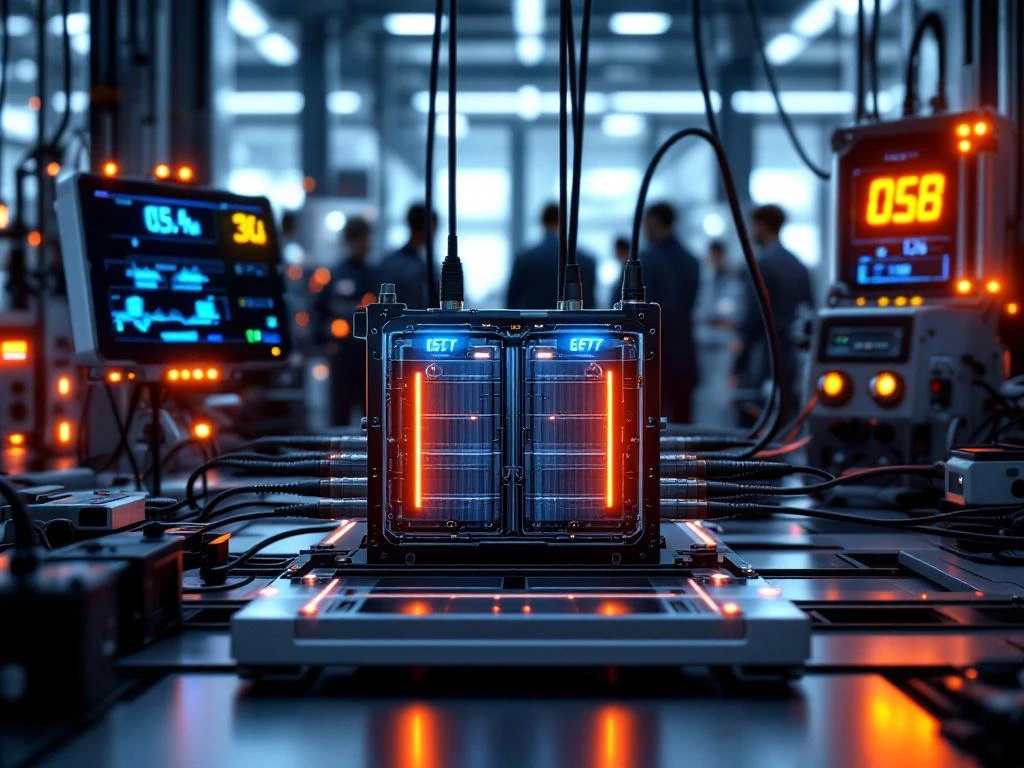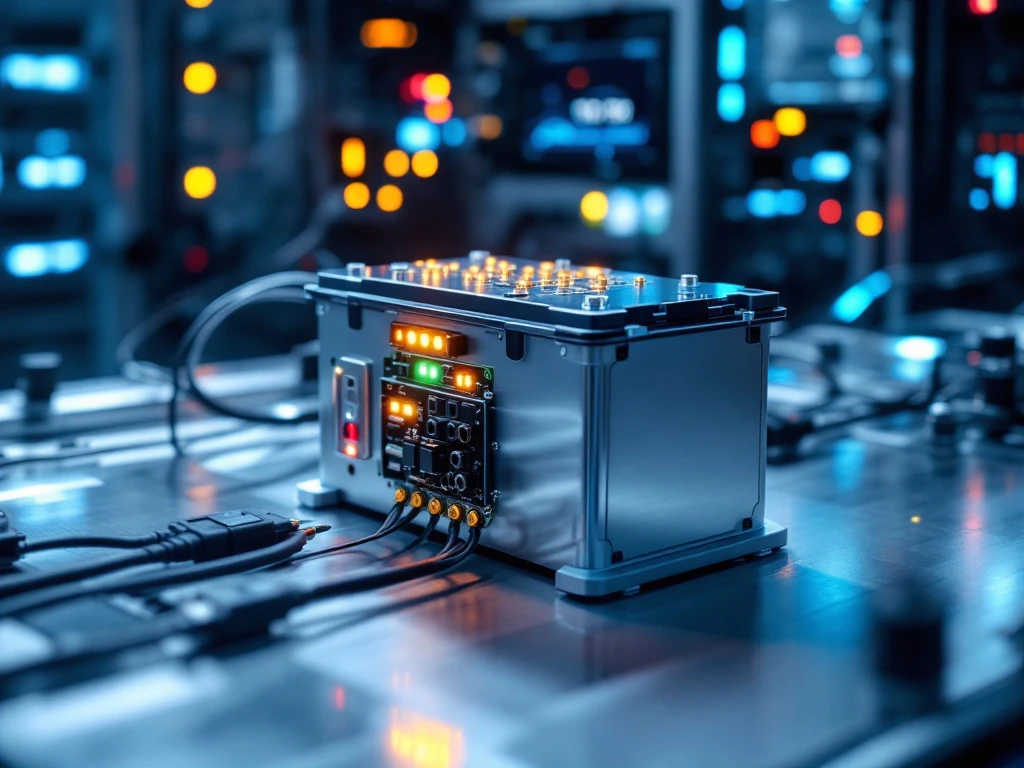When you’re working with high-performance battery systems in Formula racing or sports car applications, the stakes couldn’t be higher. A single safety oversight can lead to catastrophic thermal runaway, electrical shock, or chemical exposure that puts your entire team at risk. The unique demands of custom modular energy storage systems require specialised knowledge that goes far beyond standard electrical safety training.
Racing teams operating with lithium battery systems face challenges that traditional automotive workshops never encounter. From handling high-voltage modules weighing hundreds of kilograms to managing complex thermal systems under extreme conditions, your team needs comprehensive battery safety training that addresses these specific risks. The following seven essential training topics will help you build a robust safety programme that protects your personnel whilst maintaining the competitive edge your performance applications demand.
1. Electrical safety fundamentals and shock prevention
High-voltage battery systems in racing applications typically operate between 400-800 volts, creating serious electrical hazards that require specialised safety protocols. Your team must understand voltage awareness principles, including how to identify energised systems, recognise warning signs of electrical faults, and implement proper isolation procedures before any maintenance work begins.
Lockout/tagout procedures become critical when working with modular energy storage systems that can retain charge even when disconnected from the main circuit. Training should cover proper isolation techniques, verification methods using appropriate test equipment, and the importance of treating every system as live until proven otherwise. Personal protective equipment requirements include insulated gloves rated for the system voltage, arc-rated clothing, and safety footwear designed for electrical work environments.
Understanding electrical hazards specific to battery systems means recognising that these aren’t just simple DC circuits. Modern racing battery systems include complex battery management systems, cooling pumps, and monitoring equipment that create multiple potential shock points throughout the installation.
2. Chemical hazard awareness and electrolyte handling
Different battery chemistries present unique chemical risks that your team must understand thoroughly. Lithium-ion systems contain electrolytes that can release toxic gases when damaged, whilst other chemistries may involve corrosive materials that require specific handling procedures. Battery team training must address the particular chemistry your systems use and the associated risks.
Proper handling procedures for electrolytes include understanding material safety data sheets, recognising signs of electrolyte leakage, and knowing how to contain spills safely. Emergency response protocols for chemical exposure should be rehearsed regularly, with team members knowing exactly where eyewash stations are located and how to administer first aid for different types of chemical contact.
Safe storage practices for hazardous materials become particularly important in racing environments where space is limited and equipment is frequently transported. Your training programme should cover proper ventilation requirements, compatible storage materials, and segregation requirements for different chemical types.
3. Thermal management and fire prevention protocols
Thermal runaway represents one of the most serious risks in lithium battery safety, particularly in high-performance applications where batteries are pushed to their limits. Your team needs to understand the warning signs of thermal issues, including unusual odours, visible swelling, or unexpected temperature increases detected by monitoring systems.
Temperature monitoring techniques should be part of routine operations, with team members trained to interpret data from thermal sensors and understand when readings indicate potential problems. Fire suppression systems specific to battery environments require different approaches than traditional automotive fire safety, as water-based systems can create additional electrical hazards.
Emergency response procedures for thermal incidents must account for both air-cooled and liquid-cooled systems, as each presents different challenges during an emergency. Training should include evacuation procedures, proper use of specialized fire suppression equipment, and coordination with emergency services who may not be familiar with industrial battery safety requirements.
4. Proper handling techniques for battery modules
Battery modules in racing applications can weigh 50 kilograms or more, making proper lifting techniques essential for preventing injury. Safe transportation methods must account for the electrical hazards present in these modules, requiring specialised lifting equipment that provides electrical isolation whilst supporting the weight safely.
Proper use of handling equipment includes understanding weight limits, inspection procedures for lifting gear, and techniques for manoeuvring heavy modules in confined spaces typical of racing workshops. Battery handling procedures should emphasise the importance of team lifting for heavier modules and clear communication during movement operations.
Best practices for modular system assembly and disassembly require understanding connection sequences that minimise electrical risks, proper torque specifications for high-current connections, and techniques for preventing physical damage to sensitive components during installation procedures.
5. Emergency response procedures and incident management
Comprehensive emergency action plans must address various battery-related incidents, from minor electrolyte spills to major thermal events. Your team needs clear procedures that account for the unique challenges of custom battery systems, including how to safely disconnect power, contain hazardous materials, and evacuate personnel when necessary.
First aid protocols specific to battery injuries require understanding treatment for chemical burns, electrical shock, and inhalation of toxic gases. Team members should know when injuries require immediate professional medical attention and how to provide appropriate care whilst waiting for emergency services to arrive.
Incident reporting requirements help identify patterns that could prevent future accidents whilst ensuring compliance with relevant safety regulations. Coordination with emergency services should include pre-planning discussions so local responders understand the specific hazards present in your facility and the specialized equipment they may encounter.
6. Personal protective equipment selection and maintenance
Appropriate PPE for different battery operations varies significantly depending on the specific task being performed. Electrical safety training should cover selection criteria for protective equipment, including voltage ratings for gloves, arc ratings for clothing, and respiratory protection requirements when working with potentially hazardous electrolytes.
Maintenance and inspection schedules for safety gear ensure that protective equipment remains effective when needed most. Regular testing of insulated gloves, inspection of arc-rated clothing for damage, and replacement schedules for respiratory filters should be part of your routine safety procedures.
Understanding PPE limitations helps team members recognise when additional precautions are necessary and prevents overconfidence in protective equipment. Training should emphasise that PPE is the last line of defence, not a substitute for proper safety procedures and hazard elimination.
7. Testing and maintenance safety procedures
Safe practices for battery testing operations require understanding how to use specialised test equipment whilst maintaining electrical safety. Battery safety protocols during testing should include proper isolation procedures, verification of test equipment calibration, and understanding how to interpret results that might indicate safety concerns.
Maintenance protocols that minimise risk exposure include developing procedures for routine inspections, cleaning operations, and component replacement that account for both electrical and chemical hazards. Proper use of testing equipment requires training on equipment limitations, safety features, and emergency shutdown procedures.
Safety considerations during system commissioning and decommissioning are particularly important in racing applications where systems are frequently modified or upgraded. Your procedures should address safe methods for initial system energisation, performance verification, and end-of-life disposal requirements for battery components.
Building a culture of safety in your battery operations
Creating a comprehensive energy storage safety programme requires more than just technical training. Your team needs ongoing education that keeps pace with evolving technology and changing regulations. Regular refresher sessions, updates on new safety equipment, and lessons learned from industry incidents all contribute to maintaining high safety standards.
Accountability systems for safety compliance help ensure that proper procedures are followed consistently, even under the pressure of race deadlines. Open communication about safety concerns encourages team members to report potential hazards before they become serious problems, creating an environment where safety is everyone’s responsibility.
The investment in comprehensive battery safety training pays dividends in reduced accidents, improved team confidence, and better overall performance. When your team understands the risks and knows how to manage them properly, they can focus on achieving the performance goals that drive your racing success. Understanding proper safe installation practices ensures that your training translates into real-world protection during hands-on operations. If you’re ready to develop a customised safety training programme that addresses your specific battery systems and operational requirements, we’d be happy to discuss how our expertise can help protect your team whilst maintaining your competitive edge. Please contact us to explore how we can support your safety training needs.



